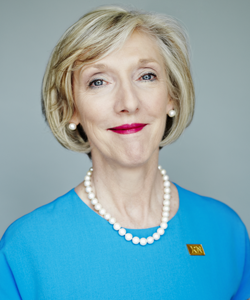On or before June 7, we go to the polls to elect a new provincial government. I consider my right to vote an immense privilege and a serious responsibility.
I remember the first time I voted. It was during a provincial election while I was a nursing student. I went to the voting booth with a group of classmates and admit not fully comprehending how important my vote really was. Growing up, my parents took their obligation to vote seriously. Our schedules were arranged so they got to the polling station on time. This was powerful role modelling for me.
When we vote, we make a choice about the type of person we want representing us. We examine what the candidates stand for, how their party’s values line up with ours, and the type of community, province or country we want to live in.
I appreciate our electoral system because of the regularity of the election cycle (every four years) and its transparency. When the last provincial election took place in 2014, more than 52 per cent of eligible voters (9.2 million people) cast a ballot. That statistic may not sound impressive, but the 2014 provincial election marked the first time in two decades that voter turnout increased. Still, half of the population didn’t bother to cast their vote. As nurses, we have the power to change that reality.
One of the things that makes me most proud about being an RNAO member is the way we engage when an election is on the horizon. We use our knowledge, influence and power to set the agenda. Long before election day, a policy platform is created. It contains the top priorities and recommendations related to nursing, universal access to health services, social determinants of health, and the environment. We also provide fiscal recommendations. This year, we will unveil our platform during Queen’s Park Day on Feb. 22.
For those of you who are new to the process, let me share briefly how our policy priorities are set. It begins with RNAO’s deep seated values to advance a society where no one is left behind. To achieve this, our CEO and policy team scan the environment and evidence to bring back to RNAO’s board of directors potential areas of focus. Following discussion and decisions by the board on which items to take forward, the policy team sets in motion a comprehensive process to develop the policy platform, including technical backgrounders. These then get transformed into a succinct brochure, developed by our expert communications team. Many of you are familiar with these backgrounders as you have used them to prepare for meetings with MPPs. All 107 MPPs receive their own copy.
Once the election is called, and parties have crafted their platforms, the policy team creates a comparison chart to cross-reference RNAO’s “asks” with the promises offered by the political parties. This platform comparison provides nurses and members of the public with a transparent, non-partisan checklist to help understand which party and policies appeal to them most.
In addition, RNAO sends a list of questions to each party leader and posts their answers on RNAO.ca. As the political process unfolds, the association’s local chapters organize dynamic and sometimes heated all-candidate debates or town hall meetings – a sign of a healthy democracy.
As RNAO’s president, I urge you to immerse yourself in the political process. Read RNAO’s policy platform, and educate your family, co-workers and friends on important health issues. Organize or attend all-candidate debates or town hall meetings in your community. Tweet about RNAO’s platform and share what’s most important to your community. Get in touch with local media by calling them or writing letters to the editor about issues that are making news or are missing from the campaign trail.
The public trusts nurses more than any other health professional. Our day-to-day work provides us with a window on the impact policies have on people’s lives. We know the health system in and out, and we know how to make it function better for the benefit of all Ontarians.
This is why we must get involved. This is why I call on every RN, NP and nursing student in Ontario to model the way for your families, your colleagues and your communities.


